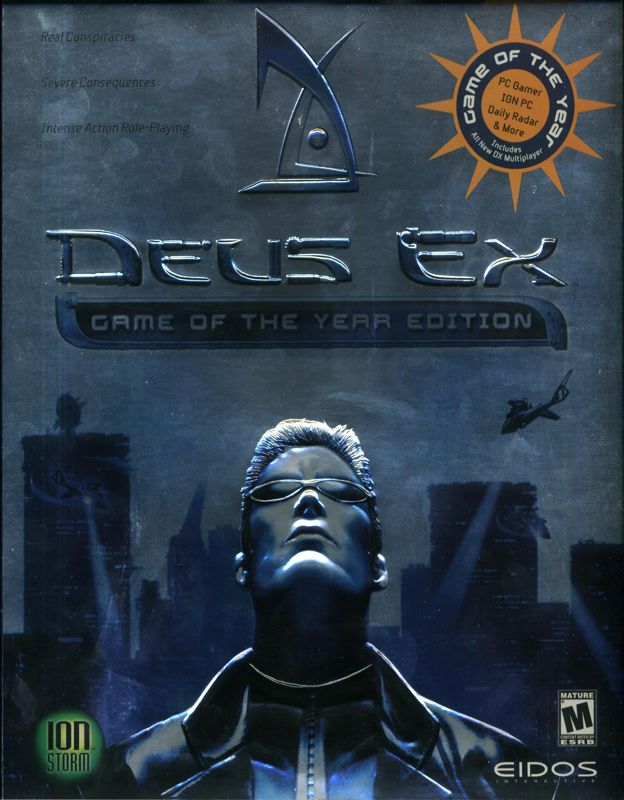Monolith's No One Lives Forever 2
The crazy world of Craig Hubbard
Deus Ex unfolded as a tapestry of conspiracy theories woven into the fabric of a cyberpunk world, offering a realistic portrayal of a vision for tomorrow.
Metal Gear Solid 2: Sons of Liberty, on the other hand, served as an ode to self-awareness in the digital era of rampant consumerism, where manipulation of content and creation of context shaped the course of evolution.
In its own way, The Operative: No One Lives Forever contextualized games in the Bondiana style. Ironically, only its sequel and Kojima's Metal Gear dared to plunge into the realm of '60s psychedelia. A noteworthy mention is Psychonauts, leaning less toward actual spies and more on psychedelic odysseys into the depths of the mind. Visually, its psychedelic aesthetic stands out, making it the most mind-expanding experience. If one could attribute a song from that era to each franchise, Pink Floyd's "A Saucerful of Secrets" would seamlessly fit Psychonauts. For the other two, MGS3 would undoubtedly groove with the entire Creedence Clearwater Revival catalog, and NOLF, well, Arthur Brown's tunes would elevate Tom Goodman's training, turning him into the ultimate vacuum cleaner salesman. Groovy, baby!
Nukulear sandwich
A millennial gamer will have flashbacks that amidst the mourning of Shepard's demise by Mass Effect 2 enthusiasts in a space soap opera setting, No One Lives Forever 2 unfolds against the backdrop of the Caribbean crisis incident. The cold war's tension between the east and west orbits around the strategic obsession with acquiring the Isle of Khios in the Sea of Marmara. This seemingly inconspicuous isle harbors the potential to unleash Shagohod's salutations, packaged eloquently within nuclear ICBMs, courtesy of Mr. Salieri. However, beneath the surface, the central intrigue runs far deeper—a philosophical duel over which director, representing which organization, possesses the proverbial balls of steel. HARM versus UNITY—an epic clash. Doctor Otto Schenker somberly conveys to UNITY that Cate Archer has met her demise, her availability reserved for the game's culmination. Bruno Laurie, in a solemn moment, extends his hand to the phone, intending to summon his top agent, Tom Goodman. A sudden realization hits him like a bullet—Goodman, too, has shuffled off this mortal coil. Left with a stark choice, he contemplates between Melvin Blitzny, the vacuum cleaner salesman, or the armed mercenary John Jack. After a ponderous deliberation, he opts for Blitzny. Together, they enlist the services of an inebriated Soviet pilot, motivated by the allure of a few vacuum cleaners, and their adventure takes flight. Penetrating Soviet airspace, the pilot tunes in the radio, introducing the timeless rhythms of "Shifting Gears" by Johnny "Hammond" Smith, a harmonious echo of the super sounds of the '70s that keeps on... truckin'.
From 2002 with love
Upon landing, the meticulous attention to detail bestowed upon this map by Monolith becomes immediately evident. Siberia unfolds as a breathtaking spectacle — from the frozen lake to the snowy expanse, complemented by the whimsical presence of elusive rabbits. The experience plunges you into a pseudo-open world, its map teeming with objectives.
While NOLF2 follows a linear trajectory, it cleverly disguises its linearity. This aspect has consistently captivated me, and it's intriguing to note that Hideo Kojima drew inspiration from it for Snake Eater. Upon closer inspection of NOLF2's gameplay mechanics, the clear influence on MGS3 becomes apparent, as Kojima refined and deepened each element. Both Hubbard and Kojima share a genius for execution, avoiding the pitfall of saturating their games with superfluous content. In Snake Eater, Kojima expanded gameplay without overwhelming it with mundane elements, akin to Hubbard's approach with NOLF. In contrast, other developers, like Ubisoft and many who embraced the trend of crafting vast, seemingly endless open-world games, have produced experiences that, despite their myriad offerings, feel bland and soulless. Far Cry and Assassin's Creed series, take note.
You ever swallow a lit cigar?
In terms of gameplay, No One Lives Forever 2 seamlessly blends elements of both stealth and action games, evoking a reminiscent hybrid experience akin to Deus Ex, Thief, or, reaching further into the past, the likes of Ultima Underworld: The Stygian Abyss. The shooting mechanics deliver a satisfying impact; even the venerable AK-47, by contemporary standards, packs a formidable punch to the face.
The Siberia starting location serves as a prime illustration of well-executed stealth. The pilot's dacha feels like a meticulously crafted movie set, designed to preview the exhilarating gameplay awaiting enthusiasts as they progress further into the game.
Harder to kill than a cacaroach
As you step into the dachya, unexpected guests come knocking at your door. Your pilot seeks refuge in the shed, leaving you to contend with the unwelcome comrades. Sure, you could opt for a straightforward gunshot solution, but the more captivating approach involves unscrewing the bulb in the hall. Silently ascending the stairs, you procure a bear trap, extinguish the lights, strategically placing the trap beneath the switch before retreating into the shadows. Now, you sit in the dark, listening as they search the first floor for you. Initiating your chain reaction requires a subtle touch on the bottle, generating a disturbance that prompts one of them to investigate the source. Discovering the darkness, he attempts to restore the light, only to find himself ensnared in the bear trap. His cries beckon the second soldier upstairs to unravel the mystery. When he flicks on the lights, you, in the spirit of Tesla, electrocute him, causing him to tumble down the stairs. Seizing the opportunity, you can now deliver an electrifying end to the first intruder.
In addition to the ingeniously incorporated stealth mechanic, you have the opportunity to accrue attribute points, enabling you to later allocate them strategically among your skills. Elevating the statistics of your skills will essentially sculpt the primary playstyle of your gaming experience. If you fancy a game of cat and mouse, it's wise to invest in stealth skills. Conversely, if you opt for a more guns-blazing approach, then channeling your points into combat skills would be prudent. The accumulation of these points is tied to your pursuit of intelligence items. What sets this process apart is its seamless integration into the gameplay, ensuring it never succumbs to the drudgery of monotony. This is largely due to the fact that the documents, serving as the source of these points, are injected with humor. After all, what better diversion for a superspy on a mission than gathering information with a cheeky twist?
In essence, the developers took meticulous care to harmonize the game's lore with its gameplay, resulting in a seamless flow where the boundary between gameplay and lore dissolves into a cybernetic oblivion, as it rightfully should.
Don't make dr. Harij angry!
The tapestry of NOLF2's lore unravels from the clandestine folds of a Soviet project named Project Omega. This covert initiative ventures into the alchemical alteration of soldiers, molding them into supersoldiers. However, this transformation exacts a heavy toll, shrouding them in madness and sculpting them into ruthless killing machines. Upon revisiting NOLF2 and undertaking numerous ventures through Peace Walker, intriguing parallels emerged.
You made dr. Harij angry
In conclusion, without spoiling too much, I'd like to add one more time that it's very noticeable that the primary pillars on which both scripts are holding are almost identical. Each game reaches a turning point that later plays a major role in the further story development. The context and even details of both situations are too similar to simply be considered coincidental. On one hand you have Boss' AI being triggered into abnormal for a machine behavior and on the other you have a project Omega supersoldier that unexpectedly regains his consciousness from the indoctrination program co-developed by the Soviet Union and HARM. The trigger itself in each case is the main character. Both awakenings happen on emotional ground, but if the supersoldier is more or less logical because he's a human being - Boss is just an AI, although very sophisticated.
However, based on what I've described, there are indeed some similarities between "No One Lives Forever 2" and "Metal Gear Solid: Peace Walker" regarding the theme of a "ghost inside the machine." Both games feature characters who are initially under the control of outside forces but later become aware of their own identity and the true nature of their situation.



_(1280)_17.jpg&ehk=IMgk96UkKUBohisD7TevEnWEnvlhGs8GyLQOyCcdNFU%3d&risl=&pid=ImgRaw&r=0)





Comments
Post a Comment